Discover the Zaoyuan Revolutionary Former Site: A Must-Visit for History Buffs
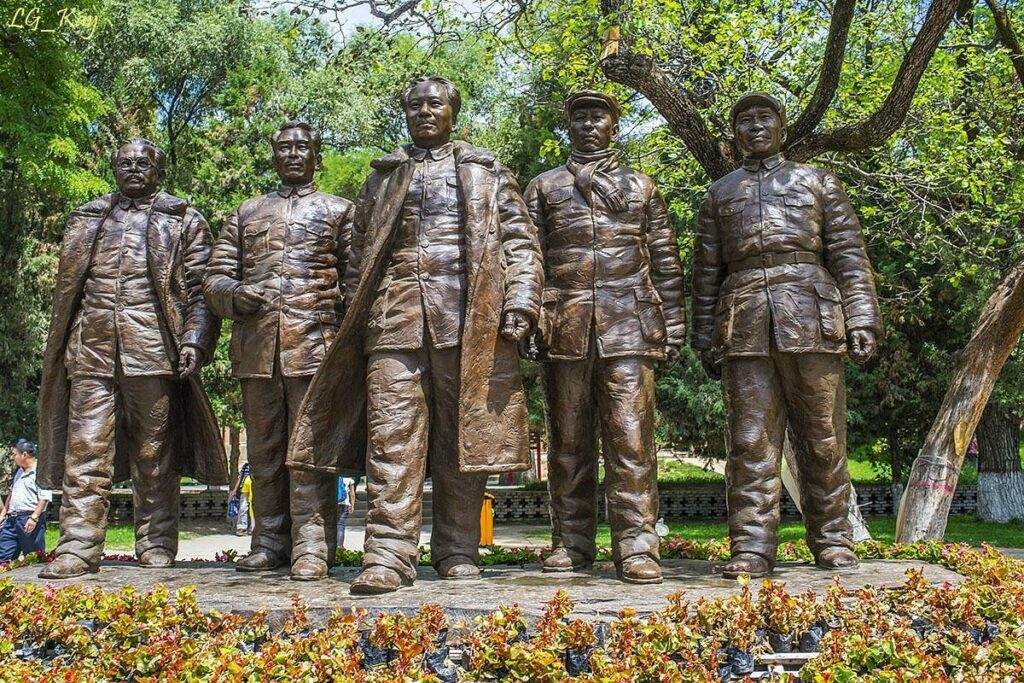
An Essential Guide to Visiting Zaoyuan Revolutionary Former Site
In This Guide
- An Essential Guide to Visiting Zaoyuan Revolutionary Former Site
- The Rich History and Legends of Zaoyuan Revolutionary Former Site
- Main Highlights: What You Absolutely Can’t Miss
- Planning Your Visit: A Practical Guide
- Tickets: Prices, Booking, and Tips
- How to Get There: A Complete Transportation Guide
- Local Cuisine and Accommodation Nearby
- Frequently Asked Questions
- Final Thoughts on Your Trip
Nestled in the heart of Yan’an, the Zaoyuan Revolutionary Former Site (枣园革命旧址) stands as a poignant reminder of China’s tumultuous past during the revolutionary era. This site, often less frequented by international travelers, offers a unique glimpse into the lives of key figures of the Chinese Communist Party, including Mao Zedong and Zhou Enlai. As you step into this historical enclave, you are not merely visiting a museum; you are walking through the very corridors where critical decisions that shaped modern China were made.
Why Visit Zaoyuan?
The Zaoyuan site is renowned for its authenticity and historical significance. Here, you can explore the humble “yaodong” cave dwellings where Mao and his comrades lived, providing insight into their austere lifestyle during a time of struggle. The minimalistic furnishings, including Mao’s own wooden bathtub, reflect the dedication and commitment of these leaders to their revolutionary cause.
For those with a keen interest in Chinese history, this site is an essential pilgrimage. Unlike more tourist-heavy destinations, Zaoyuan allows for a more intimate experience with history, away from the crowds. The surrounding area also features several monuments and museums, enriching your understanding of the revolutionary narrative.

Zaoyuan_Revolutionary_Former_Site.
Visitor Experience
While English may not be widely spoken at the site, the rich array of exhibits and the palpable sense of history make for an enriching visit. The gardens and simple farmlands used by Mao for relaxation and cultivation further enhance the experience, allowing visitors to connect with the personal aspects of these historical figures’ lives.
With its serene atmosphere and profound historical context, the Zaoyuan Revolutionary Former Site invites you to delve deeper into the revolutionary spirit that has shaped China. Whether you are a history buff or a curious traveler, this site promises an enlightening experience that resonates long after your visit.
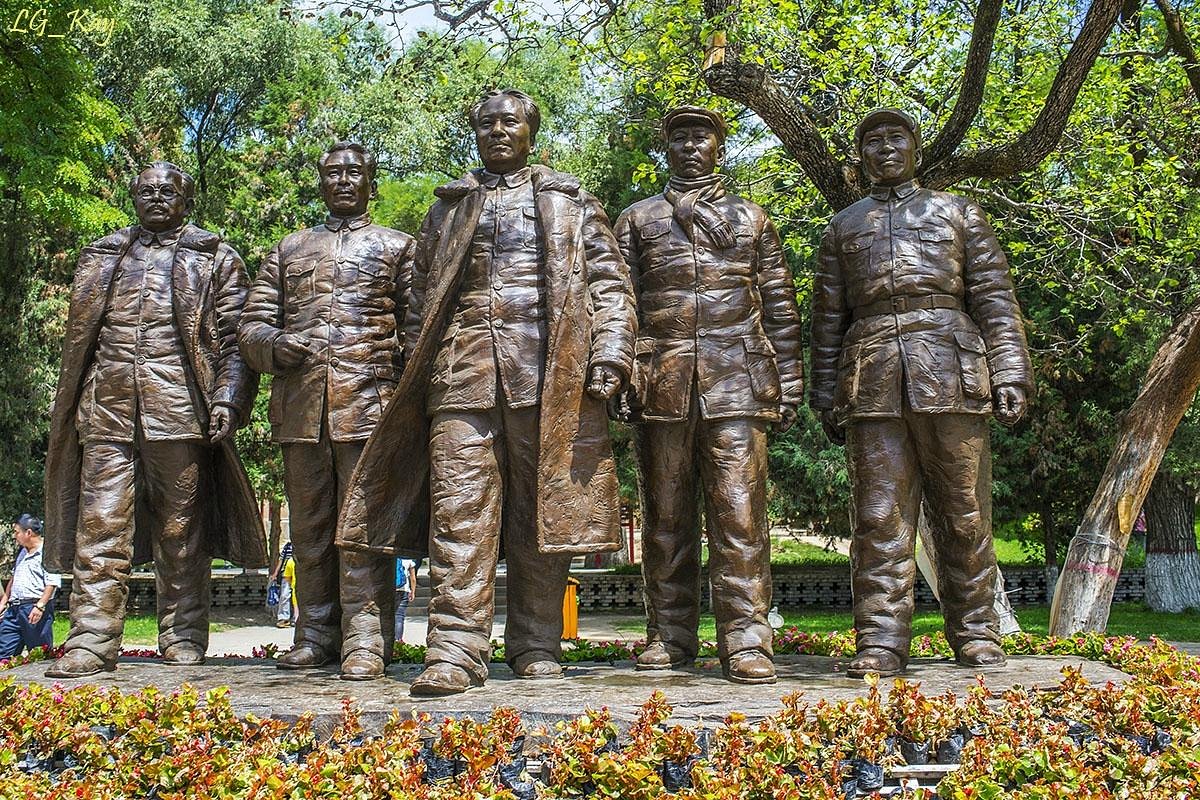
Zaoyuan_Revolutionary_Former_Site.
Essential Information
- Location: Zaoyuan Village, Zaoyuan Town, Baota District, Yan’an, Shaanxi, China
- Opening Hours:
- Tuesday to Thursday: 8:00 AM – 6:00 PM
- Friday to Sunday: 8:00 AM – 6:00 PM
- Monday: Closed
- Nearby Attractions: Don’t miss the chance to explore other revolutionary sites in Yan’an, such as the Yangjialing Revolutionary Former Site and the Revolutionary Memorial Hall.
Prepare for a journey through China’s revolutionary history at the Zaoyuan Revolutionary Former Site, where every corner tells a story of resilience and determination.
The Rich History and Legends of Zaoyuan Revolutionary Former Site
Unearthing the Legacy of Zaoyuan Revolutionary Former Site
Nestled in the heart of Yan’an, the Zaoyuan Revolutionary Former Site serves as a crucial touchstone in the narrative of China’s tumultuous journey towards communism. This site is not just a collection of cave dwellings and rustic offices; it embodies the spirit and struggles of revolutionary leaders who shaped modern China.

Zaoyuan_Revolutionary_Former_Site.
Historical Significance
The Zaoyuan site was integral to the Chinese Communist Party (CCP) during the late 1940s, a period marked by intense conflict and ideological fervor. Here, key figures such as Mao Zedong and Zhou Enlai operated from this modest yet significant complex, which functioned as the headquarters for the CCP. The site symbolizes a turning point in Chinese history, where revolutionary ideas began to crystallize into the policies that would govern the nation for decades.
- Location: Situated in Zaoyuan Village, the site is characterized by its unique yaodong—cave dwellings that provided both living and working spaces for the leaders.
- Living Conditions: Visitors often remark on the spartan nature of these homes, equipped with minimal furnishings. Notably, Mao Zedong had a wooden bathtub, reflecting a blend of simplicity and personal preference amidst the austere surroundings.
Legends and Folklore
A tapestry of legends and anecdotes surrounds the Zaoyuan site, enriching its historical narrative. Among the most captivating tales are those that illustrate Mao’s connection to the local land and people. It’s said that he personally tended to a small garden where he grew vegetables, emphasizing the revolutionary ethos of self-reliance and hard work.

Zaoyuan_Revolutionary_Former_Site.
Additionally, the site has become a symbol of resilience and commitment to revolutionary ideals. Locals recount stories of how the leaders would engage with villagers, fostering a sense of community and shared purpose during the revolutionary struggles.
Insights from Visitors
International travelers often describe Zaoyuan as a hidden gem, relatively undiscovered compared to other historical sites in China. Many express a profound appreciation for the opportunity to walk in the footsteps of history, gaining insights into how these leaders lived and worked during pivotal moments of change.
- Cultural Immersion: While English may not be widely spoken, the site offers an authentic experience steeped in history, making it particularly appealing to students of Chinese history and culture.
- Nearby Attractions: Just a short drive away is Liangjiahe, where Xi Jinping spent time during the Cultural Revolution, offering further context to the revolutionary fervor that permeated this region.
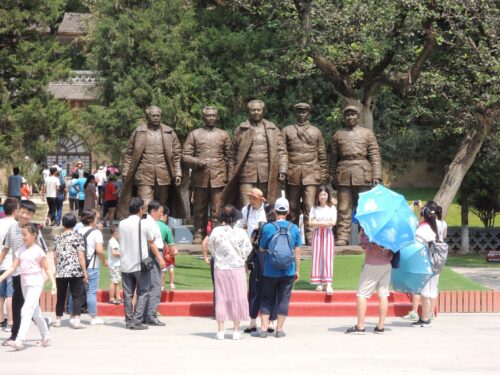
Zaoyuan_Revolutionary_Former_Site.
Conclusion
The Zaoyuan Revolutionary Former Site stands as a testament to a critical era in China’s past, inviting visitors to delve into the lives of its revolutionary leaders. Whether you’re an avid historian or a curious traveler, exploring this site offers a unique lens through which to understand the complexities of modern China and its path to the present. As you walk through the ancient cave dwellings and reflect on the stories embedded within these walls, you participate in a narrative that continues to shape the identity of a nation.
Main Highlights: What You Absolutely Can’t Miss
Discover the Zaoyuan Revolutionary Former Site: A Journey into China’s Revolutionary History
When exploring Yan’an, the Zaoyuan Revolutionary Former Site is an essential stop for anyone interested in the rich tapestry of Chinese history and culture. This site played a pivotal role in the early years of the Chinese Communist Party and offers a unique glimpse into the lives of its leaders during a tumultuous period. Here are the highlights you absolutely cannot miss during your visit.
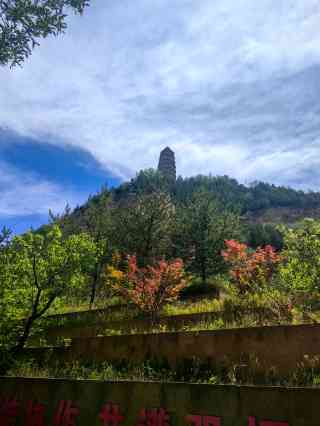
Zaoyuan_Revolutionary_Former_Site.
1. Historical Significance
Zaoyuan, often referred to as the “Date Garden,” served as the headquarters for the Chinese Communist Party from 1942 to 1947. It was here that Mao Zedong and other key figures, such as Zhou Enlai, led the Party through critical wartime and revolution planning. Understanding the historical context of this site enriches your experience.
2. Living Quarters of Revolutionary Leaders
One of the most fascinating aspects of the Zaoyuan site is the preserved living quarters of Mao and other leaders. The simplicity of their homes, with minimal furnishings and utilitarian design, reflects the austere lifestyle they embraced. Notably, Mao had a unique wooden bathtub, a curious artifact that underscores the contrast between his public persona and private life.
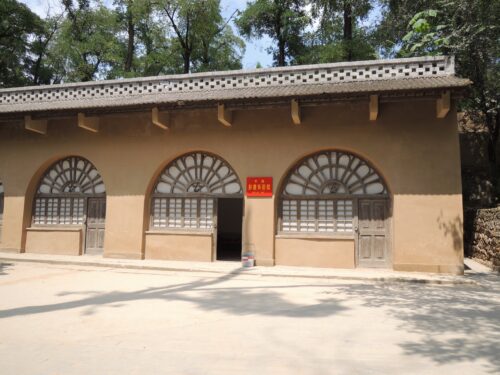
Zaoyuan_Revolutionary_Former_Site.
3. Cave Dwellings (Yaodong)
Explore the traditional cave dwellings, or yaodong, which are characteristic of the region. These structures, carved into the loess hills, provided warmth and shelter, showcasing the innovative adaptations to the local environment. Walking through these caves gives an authentic insight into the living conditions of those who shaped modern China.
4. Gardens and Agriculture
Take a stroll through the small garden where Mao cultivated vegetables—an emblematic representation of self-sufficiency. This area not only served as a source of food but also as a place for leaders to reflect and unwind amidst the pressures of revolutionary duties.
5. Museums and Exhibits
The site includes various museums and memorials that detail the history of the Chinese Communist Party during its formative years. These exhibits, though primarily in Chinese, are rich with photographs, documents, and artifacts that narrate the struggles and triumphs of the revolution. Engage with the displays to grasp the narratives that defined this era.
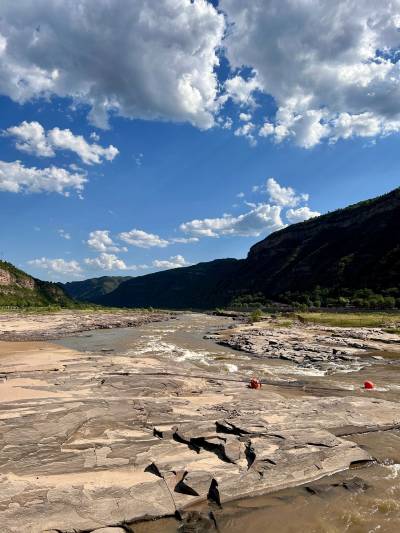
Zaoyuan_Revolutionary_Former_Site.
6. Nearby Attractions
While in the area, consider visiting the Yangjialing Revolutionary Former Site, just a short distance away. This site complements your understanding of the revolutionary landscape, as it housed the Party’s Central Committee during the same period. The Martyrs Cemetery and the Revolutionary Memorial Hall are also nearby and offer further insights into China’s revolutionary past.
7. Unique Cultural Experience
Zaoyuan is relatively off the beaten path for international travelers, making it a unique experience that allows for deeper engagement with local culture and history. Expect minimal English-speaking assistance, which adds an authentic layer to the experience as you navigate through this historical treasure.
8. Stunning Natural Surroundings
The Zaoyuan site is nestled in the picturesque landscape of Yan’an, surrounded by rolling hills and rugged terrain. Take a moment to appreciate the natural beauty that provided both a backdrop and a refuge for the revolutionary leaders during their challenging times.
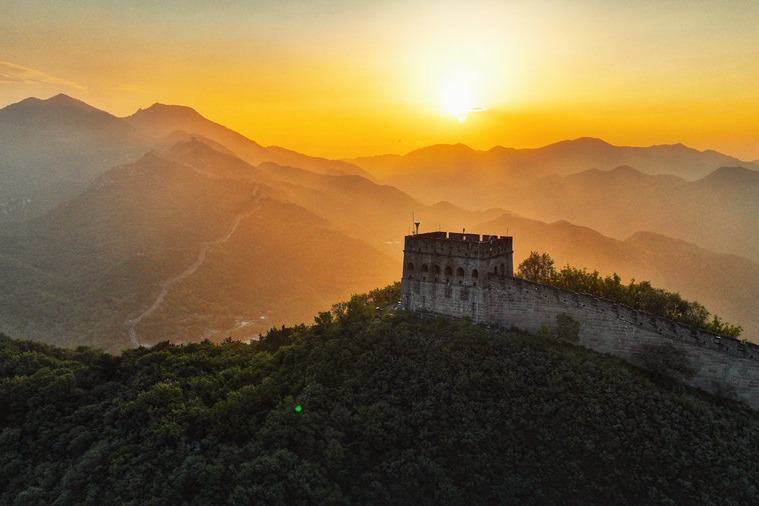
Zaoyuan_Revolutionary_Former_Site.
Conclusion
A visit to the Zaoyuan Revolutionary Former Site is more than a historical excursion; it’s a journey into the heart of a pivotal era in Chinese history. By immersing yourself in the stories, living conditions, and the cultural backdrop of this site, you will gain a profound understanding of the ideals and sacrifices that shaped modern China. Don’t miss this opportunity to connect with the revolutionary spirit that still resonates in the region today.
Planning Your Visit: A Practical Guide
Your Comprehensive Guide to Visiting the Zaoyuan Revolutionary Former Site
Overview of Zaoyuan Revolutionary Former Site
The Zaoyuan Revolutionary Former Site, located in Yan’an, Shaanxi Province, is a crucial landmark for anyone interested in the history of the Chinese Communist Party and the revolutionary era. This site served as the residence and headquarters for key leaders, including Mao Zedong and Zhou Enlai, during the formative years of the Communist movement. Today, the site offers a fascinating glimpse into their austere living conditions and the historical context of the Chinese revolution.
Getting There
- Location: Zaoyuan Village, Zaoyuan Town, Baota District, Yan’an, 716000, China
- Transportation:
- By Air: The nearest airport is Yan’an Airport (ENY), which offers domestic flights. From the airport, you can take a taxi or arrange for a shuttle service to reach the site.
- By Train: Yan’an railway station is well-connected to major cities. Upon arrival, local taxis and buses can take you to the site.
- By Bus: Public buses run frequently from other cities in Shaanxi Province to Yan’an.
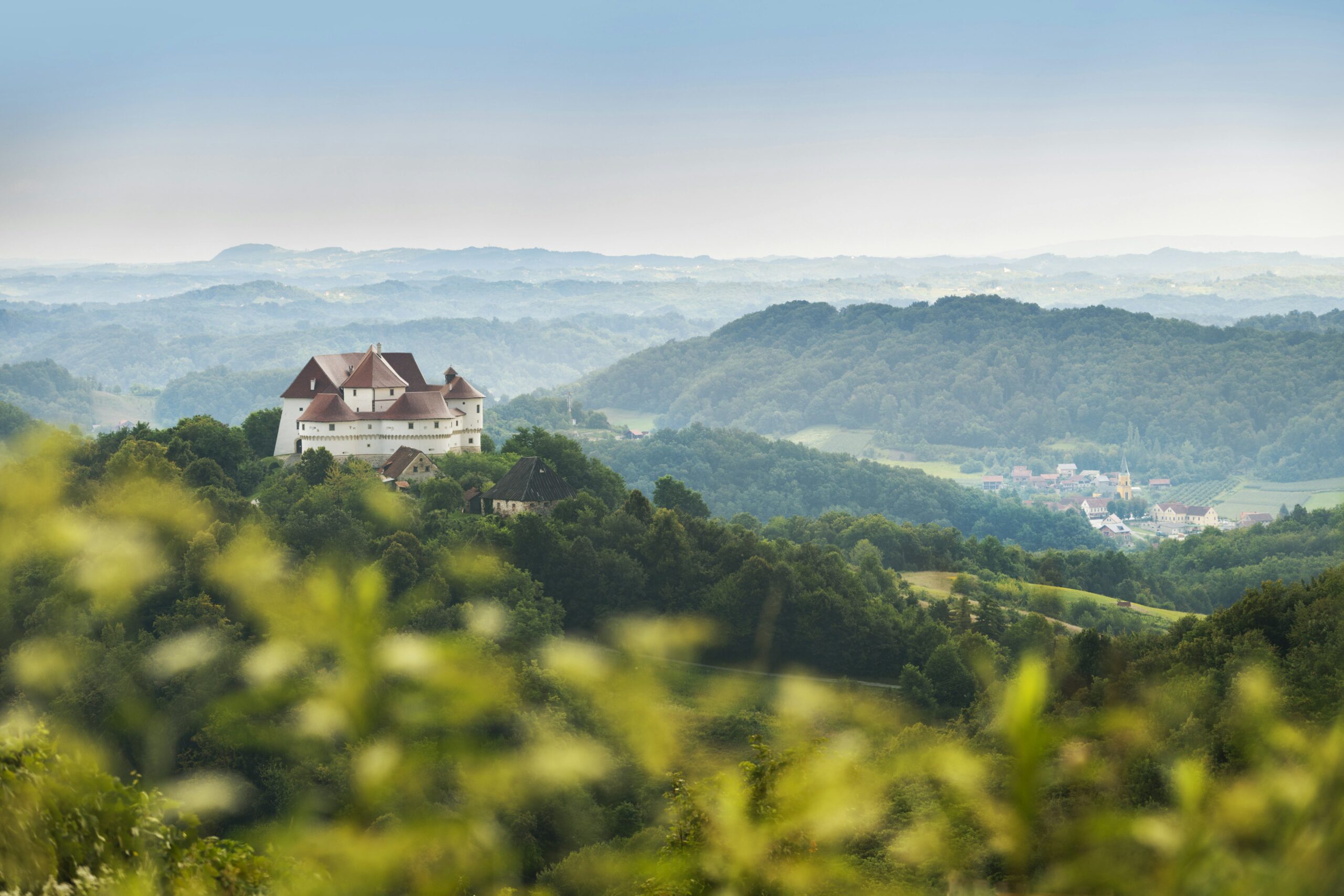
Zaoyuan_Revolutionary_Former_Site.
Opening Hours
- Monday: Closed
- Tuesday to Thursday: 8:00 AM – 6:00 PM
- Friday to Sunday: 8:00 AM – 6:00 PM
Admission
- Fee: Entry is typically free, but it is recommended to check for any temporary changes or special events that may require a ticket.

Zaoyuan_Revolutionary_Former_Site.
What to Expect
- Historical Significance: The site features the cave dwellings (yaodong) where Mao and other leaders lived. These spartan accommodations highlight the modest lifestyle of the revolutionary leaders.
- Exhibits and Museums: Expect to find various monuments, plaques, and museums that recount the history of the Communist Party during this pivotal time.
- Nearby Attractions: Don’t miss the opportunity to visit other historical sites in the area, such as the Yangjialing Revolutionary Former Site and the Revolutionary Memorial Hall, both of which provide further context to the events that transpired in Yan’an.
Tips for Visitors
- Language Barrier: Be prepared for limited English-speaking resources. Having a translation app handy can enhance your experience.
- Guided Tours: Consider joining a guided tour for in-depth insights into the history and significance of the site. Local guides can provide valuable context that enhances your visit.
- Photography: Capture the austere beauty of the site, but be respectful of any restrictions regarding photography, especially inside museums.
- Plan Your Visit: Allocate at least 2-3 hours to explore the site thoroughly. This ensures you have enough time to absorb the history and visit nearby attractions.

Zaoyuan_Revolutionary_Former_Site.
Dining and Accommodation
- Dining Options: While there are limited dining options directly at the site, there is a local restaurant (Sha Jia Bang SiFang Cai) approximately 2.1 miles away that offers authentic Northwestern Chinese cuisine.
- Accommodation: Several hotels in Yan’an cater to different budgets. Consider staying near the city center for convenience, and enjoy easy access to various attractions.
Conclusion
The Zaoyuan Revolutionary Former Site is not just a historical site; it’s a journey into the heart of China’s revolutionary past. Whether you are a history buff, a student of politics, or simply a curious traveler, this site offers a unique perspective on the sacrifices and struggles that shaped modern China. Prepare for an enlightening experience that goes beyond mere sightseeing and dives deep into the fabric of Chinese history.
Tickets: Prices, Booking, and Tips
When planning your visit to the Zaoyuan Revolutionary Former Site, it’s important to have the right information about tickets, prices, and booking tips to enhance your experience. This historical landmark, deeply intertwined with China’s revolutionary past, provides a unique glimpse into the lives of prominent figures like Mao Zedong and Zhou Enlai. Here’s everything you need to know to make your visit as smooth as possible.
Ticket Information
-
Admission Fee: Entry to the Zaoyuan Revolutionary Former Site is typically free. However, some special exhibitions or guided tours may have a nominal fee. Always check at the entrance for the latest information.
-
Opening Hours:
- Monday: Closed
- Tuesday to Thursday: 8:00 AM – 6:00 PM
- Friday to Sunday: 8:00 AM – 6:00 PM
Booking Tips
-
Arrive Early: Since the site can attract both domestic and international visitors, arriving early can help you avoid crowds, particularly on weekends and public holidays.
-
Guided Tours: While English is not widely spoken at the site, consider booking a local guide who can provide deeper insights into the history and significance of the location. Many local tour companies offer packages that include transportation and a knowledgeable guide.
-
Combine Visits: The Zaoyuan site is part of a cluster of revolutionary historical sites in Yan’an. If time permits, consider visiting nearby attractions such as the Yangjialing Revolutionary Former Site and the Revolutionary Memorial Hall. This not only enriches your understanding of the Communist Party’s history but also makes for a full day of exploration.
-
Respect the Environment: As with many historical sites, it’s vital to respect the surroundings. Follow any guidelines provided regarding photography, and maintain a quiet demeanor to preserve the solemnity of the site.
-
Bring Cash: While many places in China are moving towards cashless payments, some small attractions and local eateries may still only accept cash. It’s a good idea to have some local currency on hand for any incidental expenses.
Summary
Visiting the Zaoyuan Revolutionary Former Site can be a rewarding experience for anyone interested in China’s rich historical tapestry. With its free admission and the opportunity to step into the very spaces that shaped modern China, it’s a must-see for history enthusiasts. By following the tips provided, you can ensure that your visit is enjoyable, informative, and respectful of this significant site.
How to Get There: A Complete Transportation Guide
Navigating Your Way to Zaoyuan Revolutionary Former Site
Visiting the Zaoyuan Revolutionary Former Site (枣园革命旧址) is an enriching journey into China’s revolutionary past. Located in Yan’an, Shaanxi province, this site offers deep insights into the lives of Mao Zedong and other Communist leaders during the pivotal years of the Chinese revolution. To make your trip seamless and enjoyable, here’s a comprehensive guide on how to reach this historical landmark.
Getting to Yan’an
By Air:
– Yan’an Ershilipu Airport (ENY): The nearest airport to the Zaoyuan site is Yan’an Ershilipu Airport, which is approximately 15 kilometers from the city center.
– Flights: Regular flights connect Yan’an to major cities like Xi’an and Beijing. Upon arrival, you can easily find taxis or book a ride-sharing service to your accommodation or directly to Zaoyuan.
By Train:
– Train Services: Yan’an is well-connected by rail, with daily trains operating from major cities such as Xi’an, Chengdu, and Lanzhou. The Yan’an Railway Station is located about 5 kilometers from the city center.
– Travel Time: Depending on your starting point, travel times can vary from 5 to 12 hours.
By Bus:
– Long-distance Buses: If you prefer road travel, there are long-distance buses available from nearby cities like Xi’an, Baoji, and Hancheng. Buses to Yan’an depart from various bus stations in these cities.
– Duration: The bus journey can take approximately 5 to 8 hours based on the distance and traffic conditions.
Local Transportation in Yan’an
Once you arrive in Yan’an, there are several convenient options for reaching the Zaoyuan Revolutionary Former Site:
By Taxi:
– Availability: Taxis are readily available throughout Yan’an, and they provide a comfortable way to get to the site.
– Estimated Fare: A taxi ride from the city center to Zaoyuan typically costs around 30-50 RMB (approximately $5-$8 USD).
By Public Bus:
– Bus Routes: Yan’an has a basic public bus system, but routes and schedules may not be well-marked for international travelers. Buses to Zaoyuan may run infrequently.
– Cost: The fare is very affordable, usually around 1-2 RMB (less than $0.50 USD).
By Tour Services:
– Guided Tours: Consider joining a guided tour that includes transportation. Many local tour companies offer packages that cover Zaoyuan and other historical sites in Yan’an, providing a hassle-free experience.
Best Time to Visit
To make the most of your visit, consider the following tips:
– Opening Hours: The Zaoyuan Revolutionary Former Site is open daily from 8:00 AM to 6:00 PM, except on Mondays when it is closed.
– Seasonal Considerations: The best time to visit Yan’an is during spring (April to June) and autumn (September to November) when the weather is mild and ideal for exploring the outdoors.
Nearby Attractions
While you’re in the area, don’t miss out on other significant historical sites:
– Yangjialing Revolutionary Former Site: Just a short drive away, this site offers additional insights into the revolutionary history of the area.
– Liangjiahe: A 30-minute journey from Zaoyuan, where Xi Jinping spent part of his youth during the Cultural Revolution.
Conclusion
Reaching the Zaoyuan Revolutionary Former Site is straightforward, whether you choose to fly, take a train, or travel by bus. With a rich tapestry of history to uncover, your visit to this site will be a profound experience, deepening your understanding of China’s revolutionary era. So pack your bags, and prepare to step into a pivotal chapter of history in Yan’an!
Local Cuisine and Accommodation Nearby
Exploring the Zaoyuan Revolutionary Former Site is not just a journey through Chinese history; it also presents an opportunity to immerse yourself in the local culture and cuisine. After a day of learning about the lives of revolutionary leaders like Mao Zedong, you’ll want to savor some of the region’s culinary delights and find a comfortable place to rest.
Local Cuisine
When visiting Yan’an, you’ll discover a blend of traditional Chinese flavors, with many dishes reflecting the local agricultural bounty and cultural influences. Here are some culinary experiences you shouldn’t miss:
-
Sha Jia Bang SiFang Cai (沙家浜四方菜)
Located just a short drive from the Zaoyuan site, this restaurant specializes in Northwestern Chinese cuisine. Known for its hearty dishes, you can savor offerings like lamb skewers and hand-pulled noodles that are both flavorful and filling. Make sure to try their signature Yangrou Paomo, a local bread and mutton soup that warms the soul. -
Local Date Dishes
Yan’an is famous for its dates, which are a staple in the local diet. Look for dishes that incorporate these sweet fruits, such as date pastries or date-infused rice, which give a unique twist to traditional recipes. -
Street Food Stalls
Take a stroll around local markets to experience the vibrant street food scene. You’ll find stalls selling fried dumplings, spicy snacks, and sweet treats that are perfect for a quick bite while exploring the area.
Accommodation Options
After a day of exploration, you’ll want a comfortable base to relax. Here are some recommended accommodations nearby:
-
Yan’an International Hotel (延安国际酒店)
This hotel offers modern amenities with a touch of local charm. Guests can enjoy spacious rooms, a fitness center, and a restaurant featuring local dishes. It’s conveniently located, making it easy to access the Zaoyuan site and other historical attractions. -
HanTing Express Hotel (汉庭酒店)
A budget-friendly option, HanTing Express provides clean and comfortable accommodations. This chain is known for its consistent quality, and it’s a great place for travelers looking for simplicity without sacrificing convenience. -
Baota Hotel (宝塔宾馆)
Located near the scenic Baota Mountain, this hotel offers stunning views and a peaceful atmosphere. With its traditional decor and friendly staff, it’s an excellent choice for those looking to immerse themselves in the local culture.
Conclusion
Combining your visit to the Zaoyuan Revolutionary Former Site with local culinary experiences and comfortable accommodation will enhance your understanding of this pivotal chapter in Chinese history. As you indulge in the flavors of Yan’an and settle into a welcoming hotel, you’ll find yourself fully immersed in the rich tapestry of the region’s culture and heritage.
Frequently Asked Questions
Frequently Asked Questions About the Zaoyuan Revolutionary Former Site
1. What is the Zaoyuan Revolutionary Former Site?
The Zaoyuan Revolutionary Former Site (枣园革命旧址) is a historically significant location in Yan’an, China, where key leaders of the Chinese Communist Party, including Mao Zedong, lived and worked during the Chinese Revolution. It offers visitors a glimpse into the austere living conditions and commitment of these leaders.
2. How can I get to the Zaoyuan Revolutionary Site?
The site is located in Zaoyuan Village, Baota District, Yan’an. It can be reached by taxi or local public transport from downtown Yan’an. The area is well-signposted, and local drivers are generally familiar with it.
3. What are the opening hours?
The Zaoyuan Revolutionary Former Site is open from 8:00 AM to 6:00 PM from Tuesday to Sunday. It is closed on Mondays, so plan your visit accordingly.
4. Are there any entrance fees?
As of the latest information, there is no entrance fee to visit the Zaoyuan Revolutionary Site. However, it’s advisable to check for any updates before your visit, as policies may change.
5. Is there English-speaking staff available?
While the site attracts few foreign tourists, English speakers may be limited. Consider bringing a translation app or guidebook, as the majority of the informational signage is in Chinese.
6. What can I expect to see at the site?
Visitors can explore several cave dwellings (yaodong) where Mao and other revolutionary leaders lived, as well as various museums and monuments that commemorate the site’s historical significance. The area also includes gardens and farmland that reflect the simple lifestyle of the leaders during the revolution.
7. Are there other historical sites nearby?
Yes, the Zaoyuan Revolutionary Site is part of a rich tapestry of historical attractions in Yan’an. Nearby sites include the Yangjialing Revolutionary Former Site, the Revolutionary Memorial Hall, and the Martyrs Cemetery, all of which are important to understanding China’s revolutionary history.
8. Is the site suitable for all visitors?
The Zaoyuan Revolutionary Site is generally accessible for all visitors, but be prepared for some walking. The terrain can be uneven, and the site involves exploration of outdoor spaces, so wear comfortable shoes and dress appropriately for the weather.
Visiting the Zaoyuan Revolutionary Former Site provides not only a historical perspective but also an opportunity to connect with China’s revolutionary past in a profound way. Whether you’re a history buff or a curious traveler, this site is sure to enrich your understanding of Chinese culture and history.
Final Thoughts on Your Trip
Reflecting on Your Journey to Zaoyuan
As you conclude your visit to the Zaoyuan Revolutionary Former Site, take a moment to reflect on the profound historical significance of this remarkable location. Nestled in the heart of Yan’an, Zaoyuan serves as a powerful reminder of the resilience and commitment of the leaders who shaped modern China.
A Unique Insight into History
-
Experience the Simplicity: Walking through the austere rooms where Mao Zedong and other leaders once lived, you gain insight into their dedication and the sacrifices made during a tumultuous period in Chinese history. The spartan conditions, epitomized by Mao’s wooden bathtub, encapsulate the spirit of simplicity that defined the revolutionary ethos.
-
A Gateway to the Past: For international travelers, Zaoyuan offers a rare glimpse into the world of revolutionary China. While English may be limited, the rich heritage of the site speaks volumes through its museums and monuments, ensuring an enriching experience for those eager to learn.
Beyond the Site
Consider exploring nearby attractions such as the Yangjialing Revolutionary Former Site or the Liangjiahe where Xi Jinping was exiled. These sites further expand your understanding of the historical narrative surrounding the Communist Party’s evolution.
Leaving with More Than Memories
Your visit to Zaoyuan is not merely a stop on your itinerary; it is an opportunity to connect with a pivotal chapter in history. As you depart, carry with you the stories of the past and the lessons of resilience and commitment that resonate through the ages.
In this land of rugged landscapes and historical depth, the Zaoyuan Revolutionary Former Site stands as a testament to the enduring legacy of its leaders and the transformative power of history. May your journey inspire a deeper appreciation for the complexities of Chinese culture and the narratives that continue to shape its future.